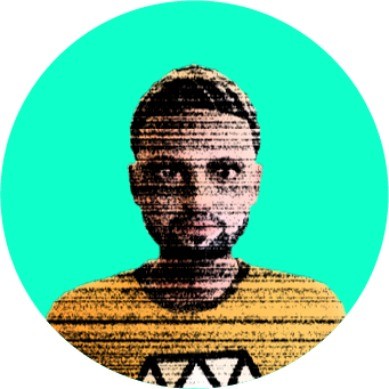Dec 14, 2020
Introduction
The blockchain appeared on the scene at the beginning of the last decade following the advent of cryptocurrencies. Since then, the blockchain has been frequently discussed in the media and has come to be described as a technology capable of having an impact similar to that of the internet. The blockchain was first used with Bitcoin in 2009, the cryptocurrency invented by Satoshi Nakamoto in 2008.
The term blockchain is often used in conjunction with another term: Distributed Ledger Technology (DLT). Blockchain is a subcategory of the broader DLT family. These are trustless systems for value transfer, organized in a decentralized way.They are often spoken of in reference to their application in the field of cryptocurrencies, or more generally in the fintech sector, but in recent years also in other areas of use such as fashion and luxury industry, food, art, etc.
But what do this technology consist of and what role does it play in the systems it helps to create?
Blockchain features
The blockchain is similar to a spreadsheet, in which the transactions that take place in the system are stored sequentially and chronologically. In essence, it is the equivalent of a ledger in which every operation that takes place is recorded.
The transactions we are talking about represent the transfer of an asset, a currency in the case of cryptocurrencies, from one account to another. By looking in the ledger you can see all the movements and deduce the current situation.
The blockchain has a number of particularities that make it different from a normal database used in other traditional applications. One of these is that the file is organized in interlinked blocks, hence the name 'blockchain'. Each block contains a set of transactions and is linked to the previous one by a number that the system calculates using an algorithm applied to the content of the block that precedes it in the sequence.
Blockchain: a chain of data blocks
If we were to modify a block, the algorithm would give a different result and the chain would break, so if we wanted to check the integrity of the blockchain starting from the oldest block, we would find that when we arrived at the block following the modified one, the number stored in that block would be different from the one produced by the algorithm applied to the previous block and it would emerge that the data had been modified.
One might mistakenly think that to make the structure consistent again, after having modified a piece of data, it would be sufficient to rewrite the new number produced by the algorithm in the next block, but by doing so, the content of the next block would be changed as well, thus also modifying the result of the algorithm for it and breaking the link with the block following it. In practice, one would end up having to update the entire chain starting from the block that has been modified to the most recent one, an extremely costly operation both in terms of calculations to be carried out and in terms of time. Another property of the blockchain derives from this fact: the immutability of the stored data. This immutability applies to the most important blockchains, such as Bitcoin and Ethereum, while for other minor ones there is a cost, which under certain conditions can be economically advantageous, to attack them and succeed in falsifying their blockchain.
Blockchain and the Distributed Ledger Technology
Blockchain is only one of the components of the system. The other fundamental component is the consensus that determine whether a transaction has taken place or not. It is able to operate in a decentralized environment that can make use of a large number of devices (nodes) on the network, each of which is responsible for managing its own copy of the blockchain. Anyone wishing to attempt to modify data already stored on the blockchain would therefore have to do so simultaneously on the majority of all nodes, which is technically almost impossible. If, hypothetically, he managed to do so on one device, this system would no longer be aligned with the other ones and would therefore be excluded from the network.
The blockchain system in a world without computing
To make the system easier to understand, we can try to imagine how a similar solution could be implemented in a world where the information technology does not exist.
First of all, one would need a network of notaries scattered throughout the world, each with its own ledger. Then, each notary would have to send by mail to the other notaries in the network all the transactions requested by their clients. In this way, everyone would know the transactions carried out by the clients of all the notaries in the network, would be able to record them in their own ledgers and thus their respective ledgers would contain the same data. However, not all ledgers would be the same, because in the ledger of one notary the transactions would be recorded in an order probably different from that of other notaries due to the timing of the post service.
Consensus
So how can we maintain the same sequence of transactions in all ledgers and ensure that they are for all intents and purposes identical? Without computer science it would be very complicated, perhaps impossible, but in technological solutions a new group of transactions, before being added to the blockchain, must be validated. In blockchains using proof of work (PoW), each node validates the transactions that are next to be stored, but one will always finish before the others. The one that "wins" this challenge will have produced the next official block of the chain. This block will be sent to all the other nodes, which will add it to their own chain, i.e. their own file. In this way the chain will continue the same on every node in the network. Transactions not included in the winning block will fall into one of the following blocks. There is therefore no specific node in charge of validating transactions, but it is a group activity whose result will be produced each time with high probability by a different node.
Disintermediation
This way of operating makes the system decentralised and provides the capacity for disintermediation that is another feature of the blockchain: there is no central computer that governs the system, indeed, none of the nodes in the network is indispensable for its operation. Any computer can be stopped at any time, just as any computer can be added to the network, provided it is equipped with the appropriate software, without altering its operation.
Conclusion
It is very hard to describe in a simple way what is a blockchain and what is its functioning. Because there are different types, even with very different features. Fundamental elements are the technical protocol, the consensus system used, the governance, the openness and decentralization of the system, its real autonomy from any form of control.
About the Author
Beatrice attended a Bachelor's degree in Italian Language, Literature and Civilization and got her Master's degree in 2020 at the Institute of Italian Studies of the University of Italian Switzerland (USI) in Lugano. Next to her humanistic education and passion for art history, she develops a personal interest in the field of communication and content creation, which she deepens in 2021 by attending a social media marketing training course. Since 2020 she has been part of the BrightNode team as a content writer.










